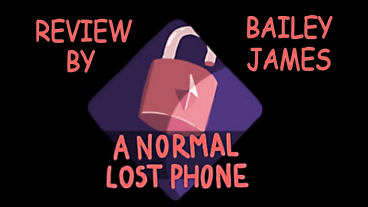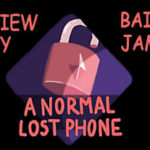
A Normal Lost Phone Review
At $2.99 for 1.5-2 hours of playtime, I can heartily recommend A Normal Lost Phone as a quick story that might pique deeper questions about personal communication and your own use of technology (or at least encourage you to add a lock-screen password to your personal devices)







“What if you found a phone?,” the development studio Accidental Queens asks in the trailer for their new game A Normal Lost Phone. The game itself answers that question — you’d poke and scroll and pry through it, forming a picture of who the owner was and what he or she was like. The developers explore this concept by placing in the player’s hands an unlocked phone and gradually revealing its secrets to tell their story.
From the most cursory glance at the phone’s incoming text messages, it becomes clear that the device belongs to someone named Sam. Start to read his conversations in earnest and you’ll learn that he’s a high schooler, he likes board games, he plays music, he uses correct punctuation when texting, and today is his birthday. Manage to crack the public WiFi password to load his emails and you’ll see more of who he talks to and where his passions lie. Every new app has a fresh piece of information to add to the puzzle of Sam, and the deeper you delve, the more the gaps of his life begin to fill in.
A Normal Lost Phone brands itself as a mystery, and the messages the phone receives when you start the game seem to advertise a sense of menace. What has put this phone into the player’s hand? How does one account for the clear inconsistencies in what Sam has told other people about his life? These questions eventually get answered, but I felt that this exposition didn’t fully mesh with the story actually being told. There are difficult topics explored about identity, sexuality and growing up, but I never felt danger. It was a peaceful experience to explore the inner workings of Sam’s life, especially with a relaxing playlist of Sam’s favorite songs looping from his music app in the background.
This kind of storytelling wouldn’t have worked if both the visuals and the gameplay weren’t so strong. I found the cell phone interface with its diamond-shaped icons to be both pleasing to the eye and believable. Technology aided in the telling of this story rather than getting in its way, which isn’t a small achievement. Phone icons, gallery photos, and other images are done as lovely hand-drawn illustrations that contribute to the game’s gauzy, romantic quality, while the graphics of different apps are colorful and functional. Numerous touches like a calendar app peppered with activities and spam email in Sam’s email trash create a believable space. Even the puzzles — in this case, parts of the phone that are password-protected but discoverable based what you learn about Sam — feel consistent and true to the game’s universe. The writing feels immediate and believable — Sam is a well-spoken narrator and his emails and texts read as a real person’s everyday communication.
A person’s phone is his or her private, personal haven built from the things that inspire happy feelings and a sense of connection to the world. There’s something appealing about games such as A Normal Lost Phone, Her Story and Emily is Away that indulge one’s less flattering impulse to dig into another person’s sacred space. I would have personally liked to have seen the player’s own role in the story interrogated more. The game allowed a couple of interactions via the phone with other characters, but as someone who has accidentally left her own phone in a cab in a food-poisoning-induced haze, the game sidestepped the scarier implications of losing such a personal device (identity theft, the widespread deletion of personally valuable information, explicit photos being sent to an entire contact list, and so on). There’s nothing wrong with this, just as there’s nothing wrong with the fact that the game summons feelings of curiosity rather than suspense or dread, but just know that this game won’t have you sweating bullets as you swipe. This is a moving story, gently told.
At $2.99 for 1.5-2 hours of playtime, I can heartily recommend A Normal Lost Phone as a quick story that might pique deeper questions about personal communication and your own use of technology (or at least encourage you to add a lock-screen password to your personal devices). It probably says something about me that I felt such delight at sifting through another person’s private life and that I didn’t have any squeamishness about it. Maybe you wouldn’t have looked. Maybe what you’d have done would surprise you.
|
+ Beautiful hand-drawn visuals
+ Intuitive phone interface
+ Calming and robust soundtrack
+ Believable writing in many different forms — texts, emails, Internet posts and more
– Calling it a “mystery” might be an oversell
– Would like to have seen the premise pushed a bit further
|
 |
Memory: 4 GB RAM
Storage: 250 MB available space
Storage: 250 MB available space

Leave a Reply